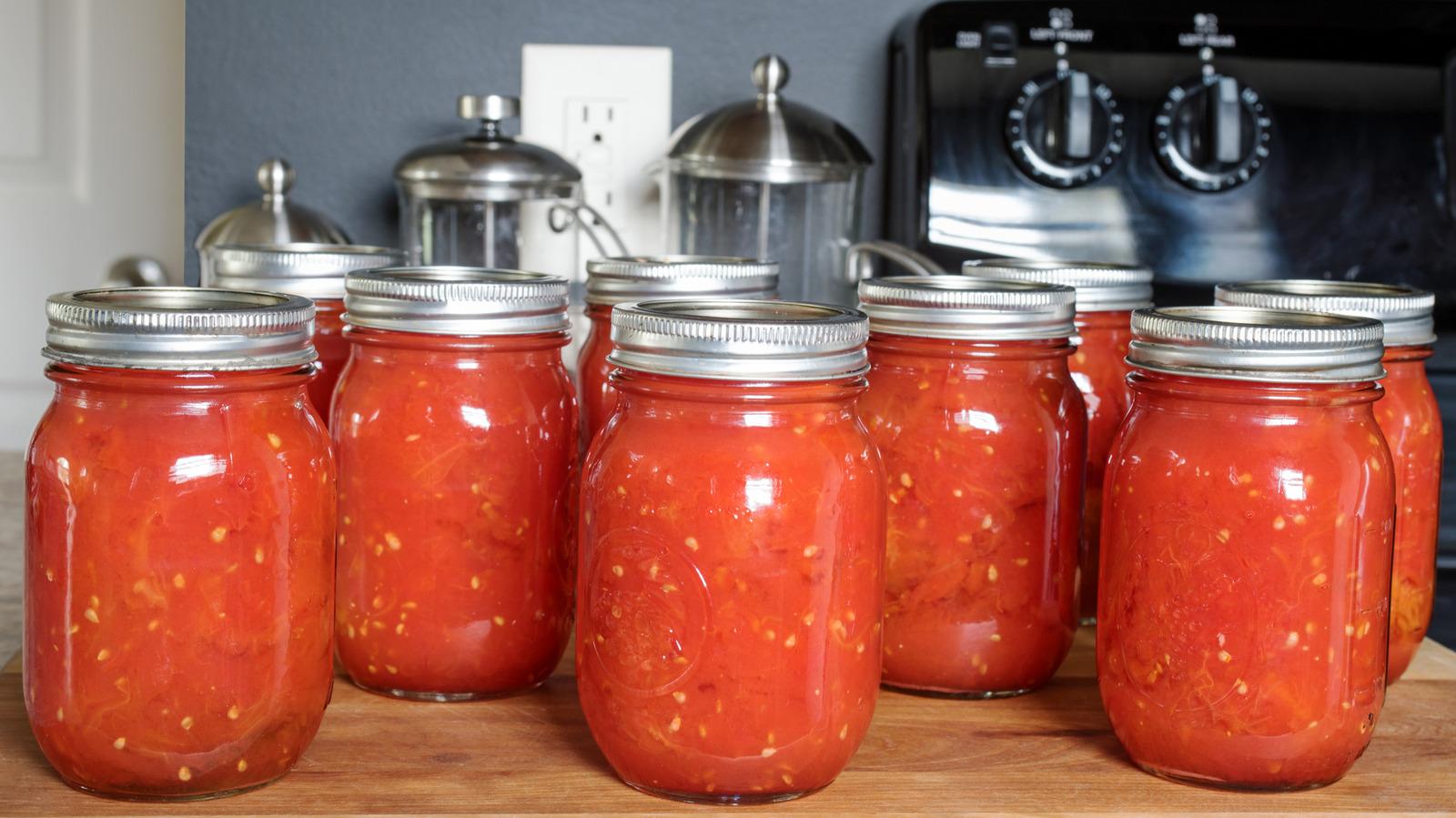
Lawcain/Getty Images
Among the biggest problems with mason jar lids is that they can be awkward to handle. The lids come in two parts: the screw band and the flat top. These components can be tough to take off, especially when first opening a mason jar, leaving you to wonder why they were designed in such a fussy fashion. The truth is, the two-part lids serve an important purpose: keeping food fresh and secure from outside elements that contribute to spoilage.
To understand the function of mason jar lids, it helps to take a look at the canning process itself. When you can food in mason jars, you typically leave about ¼ inch of space on the top. Then, you lay the flat top over the opening with the rubber seal side down and gently tighten the screw band. From there, the jars are boiled or placed in a pressure canner. At some point, you'll hear a light popping sound as the lids seal.
High temperatures destroy potentially harmful microorganisms in your food. As jars cool, air escapes and a vacuum seal forms, preventing microbes from getting inside and causing spoilage. The unique mason jar lid is important to the process; the band holds the flat top in place while air escapes during heating. As the air inside the jar contracts during the cooling process, the rubber on the flat top creates an airtight seal. This allows canned food to last for many years.
Best practices for mason jar lids

Stephaniefrey/Getty Images
Among common mistakes people make when storing canned foods is assuming all parts of a mason jar lid are reusable. While you can usually reuse the screw band, flat tops should not be used more than once during the home-canning process. After their first use, flat tops become less effective at creating a proper seal, more or less defeating the purpose of canning foods.
Check mason jar lids carefully. While buying from a reputable seller can help mitigate some issues associated with lid quality, even good companies sometimes let subpar products slip through the cracks. Make sure your lids are free from dents or other abnormalities. You should also refrain from using lids that are more than five years old, as their quality can degrade over time.
Lastly, make sure you read the manufacturer's instructions carefully. Different lids have different specificities, and proper use is crucial to ensure your food stays fresh, especially if you're canning food at home. For instance, how tightly you seal the screw band may vary from brand to brand, and many mason jar lids no longer require boiling.



